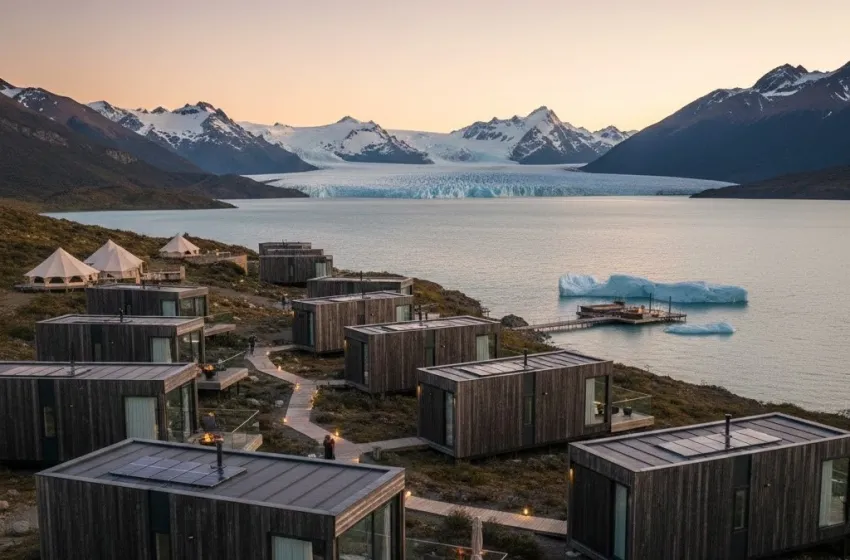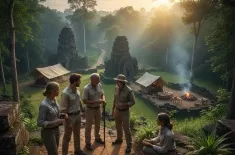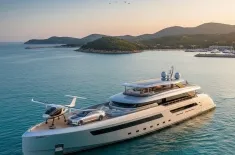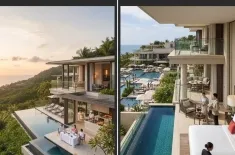Discover the future of travel with high-design, modular luxury accommodations.
In an age where travel is defined by unique experiences and exclusivity, a revolutionary concept is reshaping the landscape of high-end hospitality: Modular and Pop-Up Luxury Accommodations. This sector represents a paradigm shift, moving away from static, traditional resorts toward dynamic, high-design, temporary accommodation that can be erected quickly in remote, exclusive locations for unique, limited-time experiences. The fusion of cutting-edge architectural efficiency with uncompromising luxury standards is creating a new category of travel that is both agile and deeply immersive.
Defining the New Luxury: Modular and Pop-Up Concepts
At its core, this trend is driven by the desire to access environments previously deemed too challenging or sensitive for permanent development. A **pop-up hotel** is more than just a temporary structure; it is a meticulously planned, high-end hospitality venture designed to exist for a defined, often brief, period. These ventures offer guests the chance to inhabit and experience a location—be it a protected nature reserve, a historic site, or the fringe of a major cultural event—in a way that fixed infrastructure simply cannot facilitate.
The key to this agility is the **Modular luxury** component. Unlike conventional construction, these accommodations are built off-site in controlled factory environments, ensuring precision, minimizing waste, and maximizing quality control. These prefabricated units—which can range from individual guest suites to full-service communal spaces like restaurants and spas—are then transported and assembled on-site with minimal environmental impact. This process dramatically reduces the construction timeline, allowing a full resort to be operational in weeks, not years.
The Allure of Unique Locations and Experiential Glamping
The true magic of **remote temporary resorts** lies in their location flexibility. Traditional luxury travel is often constrained by infrastructure, zoning laws, and the prohibitive cost of developing remote sites. Pop-up and modular designs shatter these constraints, offering truly once-in-a-lifetime access. Imagine a five-star suite appearing on the edge of the Serengeti during the Great Migration, on a private Patagonian glacier, or overlooking an unpopulated stretch of coastline for a single season. These are the **unique locations** that become the canvas for the experience.
This trend directly intersects with the growth of **experiential glamping**. While traditional glamping offers comfort in nature, the modular luxury model elevates this exponentially. It moves beyond luxury tents to offer architecturally significant, climate-controlled, and fully serviced living spaces. The experience is not just about sleeping outdoors; it’s about a design-forward, integrated experience where the structure itself is an intentional part of the journey. The temporary nature adds an element of exclusivity and urgency—a "now or never" factor that enhances their perceived value and desirability.
Movable Hospitality: Technology, Design, and Sustainability
The engineering behind **movable hospitality** is highly sophisticated. It requires units to be not only luxurious but also robust, easily transportable, and adaptable to extreme climates.
Design and Aesthetics
High-design is non-negotiable in this segment. Architects and designers treat these units as bespoke, self-contained environments. The aesthetics often feature clean lines, expansive glazing to maximize views, and a focus on natural, locally sourced, or sustainable materials. The interiors must rival or surpass the amenities of the finest permanent hotels, including state-of-the-art technology, high-end fixtures, and customized furnishings. Every element, from the layout of the suite to the orientation of the structure, is optimized for the specific context of its temporary home. The design challenge is to create a sense of permanence and grounding while maintaining the fundamental requirement of being fully demountable.
Sustainable Practice
A significant driver for the adoption of modular construction in remote, sensitive areas is its inherent sustainability.
- Reduced Site Impact: The bulk of the construction process occurs off-site, meaning there is minimal disturbance to the local ecosystem. Once the units are removed, the site can be fully restored to its original condition. This is particularly crucial for environmentally sensitive reserves.
- Efficiency and Waste Reduction: Factory construction allows for precise material management, drastically cutting down on construction waste compared to traditional on-site building.
- Energy Management: Modular units are often designed with a focus on self-sufficiency, incorporating solar power, efficient water recycling systems, and high levels of insulation for passive climate control. They are built to operate "off-grid" or with minimal impact on local resources, making them ideal for remote settings.
Case Studies: From Expeditions to Events
The versatility of this model is demonstrated across various applications:
- Expeditionary Tourism: Companies are deploying remote temporary resorts in polar regions or deep jungle settings, providing a fully serviced base for scientific research or extreme adventure tourism, which is then completely removed at the end of the season.
- Major Cultural Events: High-end pop-up accommodations frequently emerge near major sporting events, music festivals (like Coachella or Burning Man), or art biennials. These offer exclusive, climate-controlled, and private environments a short distance from the action, serving a clientele that demands luxury even in a festival environment.
- Conservation and Wildlife: Modular units can serve as luxury safari camps in sensitive wildlife corridors. Their ability to be removed ensures that the tourism dollar supports conservation without creating permanent barriers or habitat fragmentation.
The future of modular luxury accommodation is one where the highest standards of comfort and service are untethered from the constraints of permanent real estate. It allows the hotel industry to chase fleeting moments and inaccessible beauty, delivering high-design, temporary accommodation that offers genuinely unique, limited-time experiences. This convergence of architecture, logistics, and luxury service is not just a trend; it's the next evolution of exclusive travel.









![Resort Deep Dive: In-Depth Review Of [Specific Luxury Resort]](https://habertalya.com/img/view/general/2025/11/b/99c81c78-b1a2-4165-b970-1822a3d8561e-travel_235x155.webp)


























